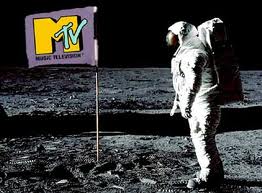Eagle Vision
All Access Review: A-
The iconic "big suit" David Byrne wore to arty, and somewhat comic, effect in the classic Talking Heads concert film "Stop Making Sense" is nowhere to be found on the idiosyncratic artist's newest performance documentary "Ride, Rise, Roar." In that exquisitely tailored, yet enormous, the rail-thin Byrne seemed like he was drowning in colorless fabric. It wouldn't have fit anybody, let alone the stick-like frame of Byrne, and yet, it told us much about contemporary living.
To anybody paying attention, it was hardly a great leap of imagination to make a connection between that suit, so devoid of personality in and of itself and yet so strangely compelling to look at, and how the frenetic, soul-stealing activity of modern life and work can swallow a person whole. And yet, there was nothing obvious or ham-handed about Byrne's unforgettable theatricality. As outsized as that suit was, the statement Byrne made with it was subtle and small, just a little tweak at the self-important business man wanting to become a master of the universe and losing himself in the process. Then again, to Byrne, maybe it was just a funny-looking, clown-ish get-up, a way to get a laugh — not bloody likely, though.
Whatever the case, it's Byrne's ability to dissect the human condition and all its mundane preoccupations, its underlying tensions, as if the world were a biology class's fetal pig — be it through enigmatic lyrics or his own strangely compelling visual artistry, and do so with a sly wit and a scientist's curiosity — that's made Byrne such a consistently interesting figure in pop music and other arenas.
"Ride, Rise, Roar" only adds to the mythology. Though not one inclined to revisit the past often, in 2008, Byrne did re-connect with Brian Eno for the LP Everything That Happens Will Happen Today, his first collaboration with Eno since 1981's My Life in the Bush of Ghosts. Informed by a decidedly un-ironic love of gospel music and its effervescent hopefulness, plus a healthy interest in electronica, Everything That Happens Will Happen Today was a triumph of man and machine. Then came the tour, the 2008-09 celebration of the music Eno and Byrne have made together over the years, starting with Eno's production and writing work with the Talking Heads, when they were a new wave, art-punk oddity that somehow forged a connection with the masses through the power of nerdy funk.
Wanting to make the experience more of a dazzling show, Byrne dreamed up an unlikely marriage of pop music and modern dance — reflecting his growing interest in the interpretive power of group movement — that could have been a train wreck. Unbelievably, it worked. The tour received glowing reviews, and "Ride, Rise, Roar" shows why. Decked out all in angelic white, the band and the small cadre of darting, twirling dancers — not the usual posse of break-dancing, hip-hop athletes you see on MTV — have a synergistic bond that adds spiritual weight and uplifting joy to performance segments that are thrilling, thought-provoking and full of boundless energy.
Cringe if you must at the thought of combining "interpretive dance" with the straightforward ethics of a traditional rock concert, but be prepared also for a visceral religious experience that mixes Talking Heads classics with selections from other Byrne-Eno works, including, of course, Everything That Happens Will Happen Today. It is beautifully shot by filmmaker David Hillman Curtis, with multiple camera angles and instinctual editing making the action even more intense and profound.
Though there's an awkwardness to the choreography surrounding Byrne in an otherwise electric version of "Once In A Lifetime," the concept comes together in the reflective "Life Is Long," with dancers wheeling fluidly and expressively across the stage on office chairs. Wonderfully abstract and moody, "I Feel My Stuff" shifts from jazzy, jungle-like atmospherics to sinewy, driving rock and then back again, the deceptively tricky choreography growing more and more anarchic. Taking on Talking Heads' favorites "Burning Down The House," "Road to Nowhere" and "Life During Wartime," Byrne and company attack them with an intoxicating, wild-eyed fervor and a snake-handler's belief that every note they're playing and every mapped-out dance step they take is full of meaning.
Sprinkled in between the concert footage are black-and-white, behind-the-scenes segments that reveal much about Byrne's creative process and how the experimental choreography developed. It's a fascinating look at an art form that doesn't get a lot of exposure, and the part where Byrne and Eno share a moment describing what influenced them musically on their latest collaboration offers fresh theories on inspiration and how they've channeled it into their more recent creations.
Boldly innovative, "Ride, Rise, Roar" gives "Stop Making Sense" a run for its money. Once again, Byrne's artistic sensibilities win out, and this grand experiment captures the best of what pop music and dance can accomplish when boundaries are pushed to the limits of imagination.
— Peter Lindblad







